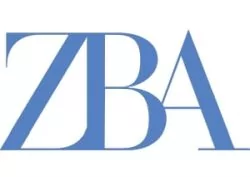Introduction
The application of the provisions of the Limitation Act, 1963 ("Limitation Act") to the Insolvency and Bankruptcy Code, 2016 ("Code") has been an area of concern for creditors in India. Especially, the limitation period has proved to be a road block in resolving old accounts where lenders were exploring other modes of recovery prior to initiating proceedings under the Code. This article summarizes issues revolving the impact of the Limitation Act on the proceedings under the Code.
Brief History- The Beginning of the Storm
The National Company Law Appellate Tribunal ("NCLAT") in B.K.Educational v. Parag Gupta & Associates ruled that the Limitation Act is not applicable to insolvency resolution proceedings under the Code. Subsequently, the legislature intervened to clear the confusion caused by the NCLAT's view and inserted Section 238A (Limitation) in the Code. Quite apart from the amendment of the Code, the Supreme Court in B.K.Educational v. Parag Gupta & Associates clarified that Article 137 of the Limitation Act is applicable to an application filed under Section 7 or 9 of the Code. Therefore, an application filed under Section 7 or 9 of the Code will be time barred if the default (or if an account was declared non-performing asset) occurred 3 years prior to the filing of such application except if Section 5 (Extension of Prescribed Period in Certain Cases) of the Limitation Act can be applied to condone the delay in filing such applications.
Extension of Limitation Period- Far From Being Settled
An acknowledgment of debt or liability extends the limitation period if such acknowledgement is made prior to the expiration of the limitation period. However, if limitation has already expired, a subsequent acknowledgment of debt will not extend the limitation period.
The NCLAT in Ishrat Ali v. Cosmos Cooperative Bank Ltd. & Anr, clarified that a judgment or a decree passed for recovery of money by a civil court or DRT cannot extend the limitation period for the purposes of filing application under the Code. Even though a decree is executable within the limitation period i.e. 12 years, the judgement creditor cannot argue that there is a default of decree or payment of dues. The NCLAT and Supreme Court have clarified that an order passed by a DRT or a decree passed by a court cannot extend the limitation period. The NCLT in a similar vein, in V Hotels Limited v. Asset Reconstruction Company , held that a financial creditor cannot derive any benefit of the action taken under the SARFAESI Act which has separate provisions for limitation. Consequently, neither an order passed by DRT nor an action under the SARFAESI Act extends the limitation period.
The NCLAT has also ruled that acknowledgment of debt in the balance sheet or annual returns of a corporate debtor cannot extend the limitation period . However, Hon'ble Justice A.I.S. Cheema in his dissenting judgment in Padamkumar v. Stressed Asset Funds and Anr , relied on a plethora of Supreme Court and high court judgements to argue that annual reports, one-time settlement proposals, proposal to restructure loans, cannot be simply ignored but specific contents of such documents should be looked into for acknowledgment of debt. A detailed discussion on this issue is outside the scope of this article, however, there are good grounds to support the views of Hon'ble Justice A.I.S. Cheema that balance sheet or annual returns of a corporate debtor should be considered in determining the existence of an admitted debt. We hope that the Supreme Court will clarify this issue sooner than later.
Conclusion
The law on the application of the Limitation Act for filing applications under Section 7 or 9 of the Code seems to be well settled. However, there is a genuine concern by creditors having old accounts that they cannot recover. It is unlikely that the Supreme Court will provide any relief or relaxation on account of the hardships faced by the lenders. Consequently, it is advisable that the lenders should obtain acknowledgment of debt from borrowers prior to the expiry of the limitation period, wherever possible. Lenders may also rely on acknowledgments of liability made in the balance sheet or annual returns of a corporate debtor, however, in light of the conflicting judgments discussed above, we have to wait for an authoritative pronouncement by the Supreme Court.
The above is a generic analysis and should not be regarded as a substitute for specific advice based on the facts of a client's objectives and specific commercial agreements reached. Please do reach out to us at mail@zba.co.in for any queries.

